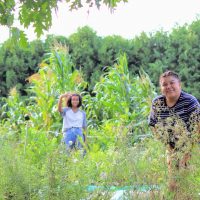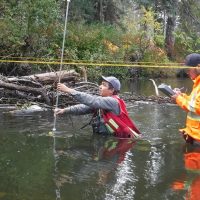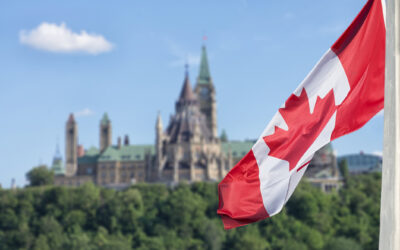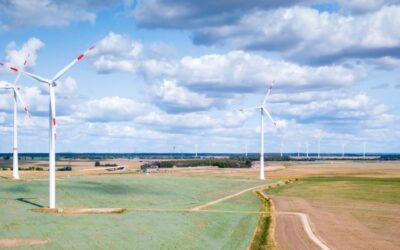To learn more about the structural determinants of health and the intersection of environmental justice and climate change, please see Dr. Waldron’s case study, “Environmental Racism and Climate Change: Determinants of Health in Mi’kmaw and African Nova Scotian communities,” published concurrently with this blog.
Canada’s climate change narrative over the last several decades is missing a critical element: the impacts that climate change has had—and will have—on some of the most vulnerable communities in Canada. In response, a climate justice movement has emerged over the last several years to position climate change as a civil rights issue with human rights implications for Indigenous, Black, and other racialized and marginalized communities.
Climate Justice: Advancing a Socio-Ecological Lens
Climate justice is both a concept and movement that recognizes that communities will be affected differently and unequally by climate change based on race, socio-economic status, class, gender, age, dis(ability), sexuality, and other social identities. Rising sea levels, disappearing shorelines, frequent and heavy rainfalls, floods, heat waves, wildfires, and poor air quality are more likely to impact Indigenous, Black, and other marginalized communities first and worst.
A climate justice lens speaks to how important it is for climate change policy to consider both the ecological and the human impacts of climate change in Indigenous, Black, and other marginalized communities. Explicitly incorporating this kind of socio-ecological analysis into climate policy research can lead to stronger and fairer climate policy.
Climate justice rests on several premises:
- Indigenous, Black, and other racialized and marginalized communities are disproportionately exposed to and affected by climate change.
- Greater exposure of BIPOC 1 communities to climate change is due to inequitable and unjust policies, including legacies of historic and ongoing racism and colonialism.
- Structural determinants of health make BIPOC and other marginalized communities less able to escape and survive climate disasters, and less likely to have access to the social, economic, and political resources and networks needed to recover from climate devastation.
- Climate change impacts can exacerbate economic and social inequalities, further affecting people’s health.
Over the past decade, I have worked with African and Nova Scotian communities to conduct research on how structural determinants shape health. The stories and statistics from some of these communities help to articulate the relationships among climate change, race, socio-economic status, and class.

Climate Policy: Implications for Social Justice & Human Rights
Sociological context matters when developing climate policy. For example, Indigenous Peoples in Canada have survived centuries of colonization that has included physical brutality, cultural dispossession and genocide, and loss of Indigenous languages. The social and health problems in these communities have roots in extensive historic (and ongoing) trauma. Black people in Canada have also been subject to the brutalities of colonization, including the suppressed history of Canada’s slave trade. In Nova Scotia, for instance, the experience of segregated education, which has left a lasting mark, contributing to high rates of unemployment and incarceration, low educational achievement, and poor health. As a result of this context, colonization in Indigenous and Black communities shape how they experience and are affected by climate policy and climate impacts in unique ways.
Yet too often, the nuance of race and its intersections with other identities is absent in the dominant climate change narrative.
Achieving fair —and effective— climate policy requires more attention to these histories and legacies. To substantively reduce climate impacts, policy makers will need to be more intentional in considering the unequal distribution of powers that render certain communities more vulnerable to climate change. Policy makers will also need to begin to give sustained attention to the structural determinants of health that have already created vulnerabilities in Indigenous, Black, and other marginalized communities. The complex link between a healthy planet in the face of climate devastation and the urgency in protecting the health and well-being of communities that are the most vulnerable to climate devastation are a key part of the policy problem – and must also therefore be considered in potential solutions.
To be clear, in no way am I suggesting that climate policy shift focus away from reducing greenhouse gas emission and other technical issues which have been a focus for the past decade. What I am suggesting, however, is that climate policy should push beyond simply identifying where ‘risks’ are and instead begin addressing the ways in which climate change vulnerability is being created by current policies and systems.
Climate change frameworks across Canada should reflect the imperative of racial, gender, and economic equity. To be effective, climate policy must focus on undoing the structural inequities that lead to power imbalances within society and, consequently, differential exposure to climate devastation.
Dr. Ingrid Waldron is HOPE Chair in Peace and Health at McMaster University and the co-producer of the Netflix film based on her book There’s Something in the Water: Environmental Racism in Indigenous and Black Communities.
References
African Nova Scotian Affairs. n.d. African Nova Scotian community. ansa.novascotia.ca/community.
Akerlof , K. L., Delamater, P. L., Boules, C. R., Upperman, C. R., & Mitchell, C. S. (2015). Vulnerable populations perceive their health as a risk from climate change. International Journal of Environmental Research and Public Health, 12(12), 15419-15433.
Davidson, A. (2015). Social determinants of health: A comparative approach. Toronto: Oxford.
De Leeuw, S.; Lindsay, N.M. & Greenwood, M. (2015). Rethinking determinants of Indigenous peoples’ health in Canada. In M. Greenwood, S. De Leeuw, N. M. Lindsay & Reading, C. (Eds.), Determinants of Indigenous peoples’ health in Canada: Beyond the social (pp.xi-xxix). Toronto: Canadian Scholars Press.
Durkalec, A., Furgal, C., Skinner, M. W., & Sheldon, T. (2015). Climate change influences on environment as a determinant of Indigenous health: Relationships to place, sea ice, and health in an Inuit community. Social Science & Medicine, 136-137, 17-26.
Ellis-Lamkins, P. (2013). How climate change affects people of color, March 3. The Root. http://www.theroot.com/articles/politics/2013/03/environmental_racism_blacks_should_care_about_climate_change/
Gazso, A., McDaniel, S. & I.R.G Waldron (2016). Networks of social support to manage poverty: More changeable than durable, Journal of Poverty, 20 (4), 441-463.
Lewis, S. K. (2016) Climate justice: Blacks and climate change. The Black Scholar, 46(3), 1-3.
Luck, S. (2016). Black, Indigenous prisoners over-represented in Nova Scotia Jails. cbc News Nova Scotia, May 20. cbc.ca/news/canada/nova-scotia/black-indigenous-prisoners-nova-scotia-jails-1.3591535.
McGibbon, E., Waldron, I.R.G. & J. Jackson (2013). The social determinants of cardiovascular health: Time for a focus on racism (Guest Editorial), Diversity & Equality in Health & Care, 10(3), 139–42.
Office of Aboriginal Affairs. n.d. Facts sheets and additional information. novascotia.ca/abor/aboriginal-people/demographics/.
Raphael, D. (2007). Poverty and the modern welfare state. In D. Raphael (Ed.), Poverty and policy in Canada: Implications for health and quality of life (pp. 5–26). Toronto: Canadian Scholars Press.
Simmons, D (2020). What is climate justice? July 29. Yale Climate Connections. https://yaleclimateconnections.org/2020/07/what-is-climate-justice/
Statistics Canada (2011). Nova Scotia Community Counts, Census of Population and National Household Survey. 12.statcan.gc.ca/nhs-enm/2011/dp-pd/prof/index.cfm?Lang=E.
Statistics Canada (2017). Visible minority, generation status, age and sex for the population in private households of Canada, provinces and territories, Census Metropolitan Areas and Census Agglomerations, 2016 Census – 25% Sample Data. October 25.
United Nations (2019). Climate justice. May 31. United Nations. https://www.un.org/sustainabledevelopment/blog/2019/05/climate-justice/
Waldron, I.R.G. (2018). There’s something in the water: Environmental racism in Indigenous & Black communities. Halifax: Fernwood Publishing.
Waldron, I.R.G. (2019). The health & wellness of people of African descent in Nova Scotia. A report submitted to the NSHA. Halifax, NS: Nova Scotia Health Authority.
Waldron, I.R.G & A. Gazso (2017). Managing low income in families: The importance of institutions and interactions. In A. Gazso and K. Kobayashi (Eds.), Continuity & innovation: Canadian families in the new millennium (pp. 80-96). Toronto: Nelson Education.
Wortley, S. (2019). Halifax, Nova Scotia street checks report. Nova Scotia Human Rights Commission.https://humanrights.novascotia.ca/sites/default/files/editor-uploads/halifax_street_checks_report_march_2019_0.pdf









